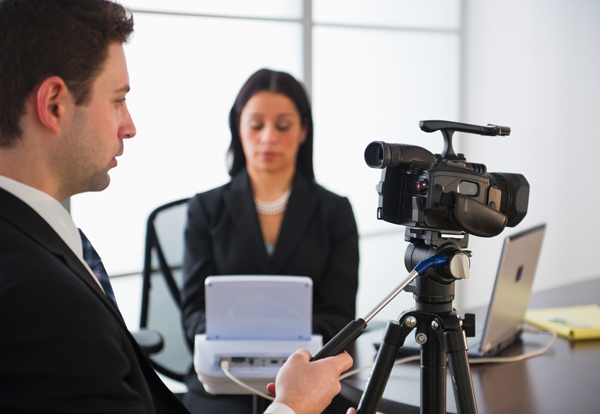Precision-Based Legal Videography for Professional Evidence Filming.
Precision-Based Legal Videography for Professional Evidence Filming.
Blog Article
Why Lawful Videography Is Essential for Accurate Legal Record-Keeping
In the world of lawful procedures, the precision of record-keeping is vital, and legal videography arises as a vital device in this context. By capturing the nuances of spoken and non-verbal communication, it dramatically decreases the possibility for false impression that can accompany standard written records. Moreover, the conservation of authentic aesthetic proof not only improves the reliability of testaments yet likewise adds to a comprehensive account of events. As we explore the multifaceted benefits of legal videography, one have to consider its implications for the future of judicial stability and transparency.
Relevance of Visual Proof
Developing the value of aesthetic proof in lawful process is vital for ensuring accurate record-keeping and enhancing the overall integrity of the judicial process. Visual proof works as a vital tool in documenting events, conditions, and various other significant information that might be necessary to an instance. Unlike created accounts, which are prone to analysis and bias, visual recordings provide a purpose, unalterable representation of facts as they occurred.
This kind of proof can catch a variety of aspects, consisting of witness habits, environmental context, and physical proof, every one of which may influence judicial end results. By offering a clear and detailed visual story, lawful videography gets rid of ambiguity and aids to protect the authenticity of the proof.
Additionally, visual proof can be critical in decreasing disputes over valid inconsistencies, as it allows for a straight comparison versus statement and other recorded records. In a period where digital modern technology is significantly prevalent, the capacity to existing visual proof successfully can substantially enhance the general quality of lawful proceedings. Eventually, the incorporation of aesthetic evidence not just bolsters the documents process but likewise reinforces public count on the judicial system by promoting transparency and responsibility.
Enhancing Statement Reputation
The combination of legal videography into court process significantly boosts the reliability of witness statement. By catching the nuances of verbal and non-verbal communication, video clip recordings give an even more detailed depiction of a witness's disposition, feelings, and integrity. This visual documentation permits jurors to observe the witness's body movement, faces, and general conduct, which are important components that can affect their assumption of testament integrity.

Additionally, the visibility of video footage can hinder witnesses from giving misleading or overstated statements, as they realize that their testament is being taped. This responsibility strengthens the honesty of the judicial process. Eventually, legal videography functions as an essential device in guaranteeing that witness testimony is not just precisely depicted yet additionally watched with increased reputation by all celebrations involved.
Comprehensive Document Preservation
Comprehensive document preservation is important for keeping the integrity of lawful proceedings. Lawful videography offers straight from the source as an essential tool in this procedure, supplying an exact visual and auditory account of testaments, depositions, and other turning points in an instance. Unlike traditional written records, video clip recordings capture the subtleties of body movement, tone, and emotion, which are essential for recognizing the context and intent behind declarations made during legal process.
Incorporating audiovisual aspects right into record-keeping enhances the preservation of evidence, making certain that it remains intact and easily accessible throughout the lawful process. This is especially crucial in instances where the reliability of witness statements might be tested, as aesthetic recordings can substantiate insurance claims and supply quality. Additionally, video records can be very useful throughout charms or retrials, using an unchanged depiction of the initial testimony.

In addition, the capacity to assess video clip evidence allows legal experts to identify crucial details that may have been overlooked in written documents. By maintaining a detailed archive of legal process via videography, law practice can promote the highest possible criteria of accuracy and responsibility, eventually adding to a fairer judicial procedure.
Enhancing Lawful Proceedings
Improving legal procedures is important for enhancing efficiency and reducing delays within the judicial system. Lawful videography functions as a crucial device in achieving this objective by offering clear and accurate aesthetic paperwork of court hearings, depositions, and testaments - legal videography. This modern technology enables real-time recording, ensuring that all spoken and non-verbal hints are captured, which can promote quicker resolution of conflicts
The check my source integration of videography into legal procedures reduces dependence on standard methods, such as extensive transcripts, which can be time-consuming to produce and examine. By having accessibility to taped video footage, lawyers can quickly reference key minutes, enhancing their capability to prepare and present instances properly. This immediacy additionally helps in the clarifying of testaments, reducing the potential for false impression.

Admissibility in Court
Exact documents is important not just for performance however likewise for making sure that evidence is admissible in court. Lawful videography functions as a vital device in this process, giving a trusted aesthetic record of testaments, statements, and events. Courts commonly need evidence to meet details criteria of admissibility, consisting of significance, authenticity, and integrity. High-grade video recordings can fulfill these requirements by recording clear audio and aesthetic details that created transcripts might neglect.
To be regarded admissible, legal videography has to abide by well-known protocols, such as appropriate tools usage, proper lighting, and clear audio capture. In addition, it is essential to have certified videographers that understand the legal needs bordering evidence collection. legal videography. The chain of wardship should additionally be kept to avoid any type of cases of tampering or alteration
Moreover, lawful videography can enhance the persuasiveness of evidence by supplying jurors with a straight view of the testimony, enabling for a much more involved understanding of the instance. In recap, the integration of legal videography into record-keeping not only sustains efficiency however also strengthens the honesty and admissibility of evidence in court procedures.
Final Thought
In conclusion, legal videography plays an essential duty in ensuring accurate legal record-keeping by offering objective aesthetic documentation. Inevitably, the consolidation of legal videography right into the judicial process promotes openness and boosts public count on in the integrity of the lawful system.
Report this page